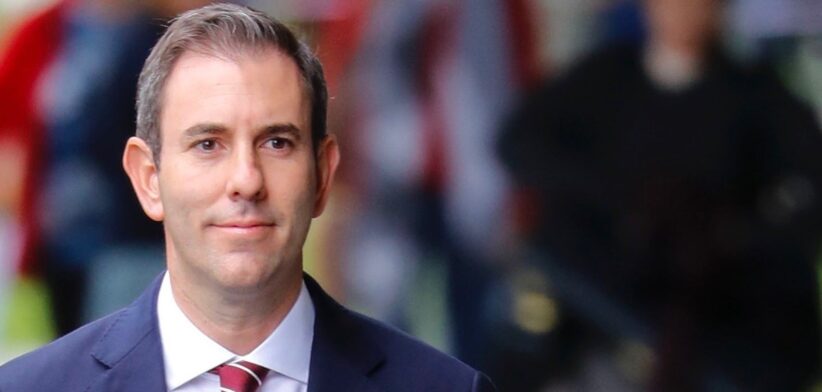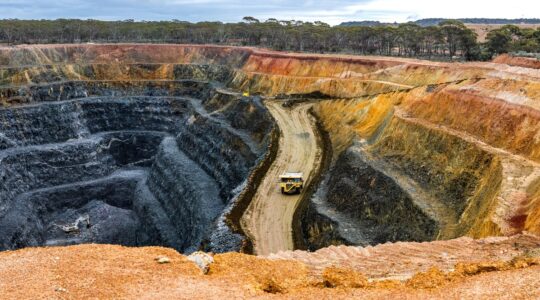By Steve Zeppa
Treasurer Jim Chalmers delivered the Federal Budget last night. Here is what you need to know.
“This is a Budget for the here and now and it’s a Budget for the decades to come …..”
Okay, that’s enough. In true Newsreel style, here are the de-politicised facts, direct from the source of Treasurer Chalmers’ Budget speech.
Economic outlook
- Inflation is lingering in North America, growth is slowing in China and tepid in Europe, tensions have escalated in the Middle East and persist in Ukraine, global supply chains are fragmenting.
- This uncertainty combines with cost-of-living pressures and higher interest rates to slow our economy, with growth forecast to be 1¾ percent this financial year and 2 percent next.
- Slower growth means a softer labour market, with unemployment expected to rise slightly to 4½ percent next year.
Cost of living
- From July 1, 13.6 million taxpayers will get a tax cut. The average benefit is $1,888 a year, $36 a week.
- $3.5 billion in new energy bill relief. From July 1, Australians will receive an energy rebate of $300 – and one million small businesses will get a bit more.
- $3 billion for cheaper medicines and community pharmacies.
- Freezing of the maximum cost of PBS prescriptions. This year and next year, no one will pay more than $31.60.
- Freezing of the cost of medicines for 5 years. No pensioner or concession cardholder will pay more than $7.70 for their medicine.
- $3.4 billion to add life changing and life-saving medicines to the PBS.
- Capping indexation of student loans to either the Consumer Price Index or the Wage Price Index, whichever is lower and backdating it to mid 2023. Wiping $3 billion in student debt for over 3 million Australians and save the average person around $1200.
- Making the Food and Grocery Code mandatory
- Strengthening the mergers regime
- Abolishing nuisance tariffs and reducing compliance costs for business.
- $1.9 billion to increase the maximum rates of Commonwealth Rent Assistance by 10 per cent.
Homes and infrastructure
- $6.2 billion in new investments to clear local infrastructure bottlenecks, provide more housing for students, fund more social and affordable housing.
- $1 billion to help states and territories build more housing sooner.
- $89 million for 20,000 additional fee-free TAFE and VET places to train more construction workers.
- Limit how many international students can be enrolled by each university based on a formula, including how much housing they build.
- $1.9 billion in loans to help build 40,000 social and affordable homes.
- More remote housing in the Northern Territory.
- $1 billion towards accommodation for women and children fleeing domestic violence, and youth.
- Investment in a new rail link from Sunshine Coast to Brisbane.
- $2.3 billion for better infrastructure and the new international airport in Western Sydney.
- $102 million to upgrade regional airports and remote airstrips.
Energy transition
- $22.7 billion Future Made in Australia package.
- A new Act and new framework focusing investment on transformational opportunities.
- Establish a domestic National Interest Account that adds discipline to investments in the national interest.
- Strengthen and streamline approvals across environmental, planning, cultural heritage and foreign investment.
- $13.7 billion in production tax incentives for green hydrogen and processed critical minerals.
- $1.7 billion Future Made in Australia Innovation Fund, to develop new industries like green metals and low carbon fuels
- $520 million to deepen net zero trade and engagement with our region
- $566 million to map the geological potential of our entire country.
Defence
- $50.3 billion over the decade to deliver the capabilities as part of the National Defence Strategy
Small business
- Extending the $20,000 instant asset write off until June 30, 2025.
- $290 million in cash flow support for up to 4 million small businesses.
- $625 million to help farmers and rural communities reduce emissions and better prepare for climate change and drought.
Tertiary education
- $350 million for fee-free uni ready courses.
- $500 million in skills for priority industries like clean energy, construction, and manufacturing, and supporting women to build careers in these fields.
Health and aged care
- $227 million for a further 29 Medicare Urgent Care Clinics.
- $361 million to strengthen the mental health system, including funding for a national digital mental health service that will provide free support to 150,000 Australians a year.
- $2.2 billion in aged care and to implement more of the Royal Commission recommendations, including $1.2 billion to improve systems so aged care services remain accessible, up to date and reliable.
- $531 million for 24,000 home care packages.
- $469 million to keep working with the disability community and the states and territories, and to crack down on NDIS fraud and exploitation.
- Fund a further increase in award wages for aged care workers.
- Provisions for a wage increase for childcare workers.
Equality and social support
- $925 million to establish the permanent Leaving Violence Program.
- $1.1 billion to pay super on government funded Parental Leave.
- $56 million to improve access to women’s health services
- $19 million to support carers to better choose how and when they work.
- Continuing the freeze on social security deeming rates until June 30, 2025.
- $41 million to further extend eligibility for the existing higher rate of JobSeeker.
First Nations
- New Remote Jobs and Economic Development Program.
- 3000 new jobs in remote Australia to build new skills and new confidence within communities.
Budget position
- Expect a surplus of $9.3 billion this year.
- Expecting a deficit of $28.3 billion in 2024–25.
- Gross debt is expected to peak at 35.2 per cent of GDP in 2026–27, before declining to 30.2 per cent by 2034–35.
- This year gross debt will be $904 billion.
- $27.9 billion in savings and reprioritisations found in this Budget.
- Banking 96 percent of revenue upgrades this year.
… And that’s why I commend this Bill – and this Budget – to the House.”
If you want the full speech, with all the unnecessary extras, you can read it on the Federal Treasury website








